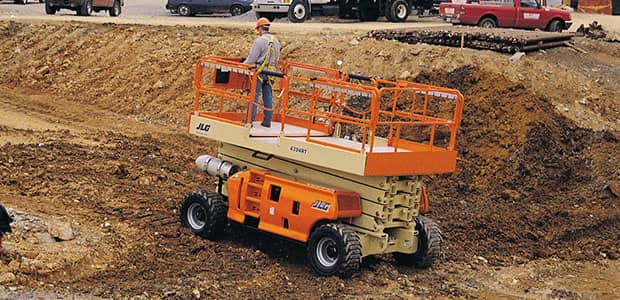Disabled Platform Lift Solutions-- Enhancing Access with Trusted Lifts
Disabled Platform Lift Solutions-- Enhancing Access with Trusted Lifts
Blog Article
Fixing Tips for Common Issues With Handicapped System Lifts
When it comes to ensuring the smooth procedure of disabled system lifts, experiencing usual problems can interfere with the performance and accessibility they supply. Let's check out some practical pointers to attend to these common issues and ensure the appropriate performance of handicapped system lifts.
Power Supply Issues
When experiencing power supply problems with disabled platform lifts, the initial step is to systematically analyze and troubleshoot prospective sources of power disruption. Beginning by checking the source of power to guarantee it is securely attached and functioning properly. Verify that the power electrical outlet is operational by examining it with an additional device. If the power source is verified to be operating, proceed to evaluate the power cable for any kind of signs of damage or use that can be creating an interruption in the power supply.

Control Board Issues
Control board breakdowns on disabled system lifts can substantially impede their operational performance and posture security threats to users. The control panel works as the central user interface for running the lift, permitting customers to start movement, control speed, and manage quits at various degrees. When the control board runs into concerns such as less competent buttons, erratic habits, or display malfunctions, it can interfere with the entire lift procedure.
One typical trouble with control board is electrical faults, which might result from wiring concerns, power surges, or part damage. These faults can trigger the control board to breakdown or come to be unresponsive, making it challenging for users to operate the lift securely. In addition, ecological variables like wetness or severe temperature levels can additionally affect the control board's efficiency, causing potential failings.
To address control panel issues successfully, routine maintenance checks and evaluations are necessary. Frequently cleaning the control panel, evaluating wiring connections, and making certain appropriate calibration can aid prevent malfunctions and make sure the lift runs smoothly. In situations of consistent problems, speaking with a qualified service technician for fixings or replacements is advised to maintain the lift's capability and safety and security for users.

Platform Stuck or Jammed
In scenarios where the handicapped platform lift experiences a system stuck or obstructed, instant focus and appropriate troubleshooting are essential to ensure the lift's performance and user safety. When experiencing a platform that is stuck or jammed, the primary step is to quit any recurring operation of the lift to stop further damage or safety and security dangers. Next, inspect the area around the system for any obstructions that might be causing the jam. It is essential to check for debris, objects, or any various other items that might be obstructing the smooth motion of the platform.
After recognizing and getting rid of any kind of obstructions, effort link to by hand relocate the platform to see if it frees up. If manual efforts are not successful, avoid from making use of excessive force as this can create damages to the lift system. In such instances, it is suggested to speak to a certified professional or the lift supplier for expert assistance in dealing with the concern. Motivate and proper resolution of a stuck or obstructed system is important to keep the lift's functional efficiency and make certain user safety.
Safety Sensor Malfunctions
An important part of impaired system lifts, security sensors play a vital duty in guaranteeing user security and lift procedure. Security sensing unit breakdowns can position major dangers to individuals relying upon these lifts for accessibility. When security sensing units breakdown, the lift might not spot obstacles this post or obstructions in its path, possibly bring about accidents or entrapment. Typical indicators of security sensing unit breakdowns consist of irregular movements, unexpected quits, or failure to react to obstacles. To resolve security sensing unit issues, beginning by evaluating the sensors for any physical damages, dirt, or imbalance. Tidy sensing units consistently and guarantee they are appropriately straightened to function accurately. Furthermore, the original source examine the wiring connections and power source to dismiss any electric problems influencing sensing unit procedure. If fixing the sensors does not resolve the problem, seek advice from a certified professional to carry out a thorough inspection and repair to maintain the lift's safety and security and functionality. Routine maintenance and punctual resolution of safety and security sensing unit breakdowns are crucial for the safe operation of disabled system lifts.
Uncommon Sounds or Motions
When operating a handicapped system lift, being conscientious to any type of unusual noises or motions is crucial for identifying possible issues that may impact its performance and safety and security. Uncommon noises, such as grinding, shrieking, or clunking sounds, could suggest issues with the lift's mechanical components, such as damaged gears, loose screws, or broken bearings. These concerns, if left unaddressed, might cause malfunctions and even full malfunction of the lift.
Likewise, unusual activities of the platform, such as jerking, drinking, or unforeseen stops, need to not be neglected (lift modernization). These movements can be a sign of electric problems, hydraulic system issues, or abnormalities in the lift's programs. Promptly exploring and attending to these unusual motions can prevent mishaps and ensure the ongoing safe operation of the system lift
In the event of experiencing uncommon noises or motions, it is advisable to stop using the lift promptly and contact a certified technician for assessment and repairs. Routine upkeep and prompt troubleshooting of any type of uncommon signs can assist lengthen the lifespan of the handicapped system lift and ensure the security of its individuals.
Conclusion
To conclude, fixing typical problems with impaired system raises calls for identifying and attending to power supply troubles, control board issues, platform jams, security sensing unit breakdowns, and uncommon sounds or activities. By adhering to correct maintenance and troubleshooting procedures, individuals can make certain the secure and efficient operation of platform lifts for individuals with handicaps.
Report this page